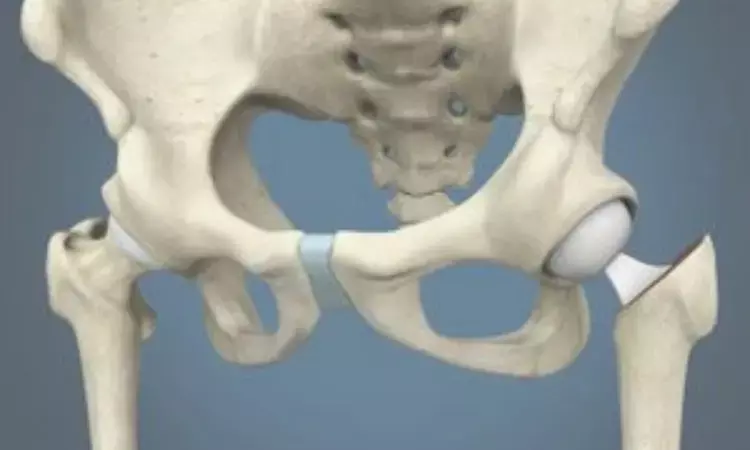- Home
- Medical news & Guidelines
- Anesthesiology
- Cardiology and CTVS
- Critical Care
- Dentistry
- Dermatology
- Diabetes and Endocrinology
- ENT
- Gastroenterology
- Medicine
- Nephrology
- Neurology
- Obstretics-Gynaecology
- Oncology
- Ophthalmology
- Orthopaedics
- Pediatrics-Neonatology
- Psychiatry
- Pulmonology
- Radiology
- Surgery
- Urology
- Laboratory Medicine
- Diet
- Nursing
- Paramedical
- Physiotherapy
- Health news
- Fact Check
- Bone Health Fact Check
- Brain Health Fact Check
- Cancer Related Fact Check
- Child Care Fact Check
- Dental and oral health fact check
- Diabetes and metabolic health fact check
- Diet and Nutrition Fact Check
- Eye and ENT Care Fact Check
- Fitness fact check
- Gut health fact check
- Heart health fact check
- Kidney health fact check
- Medical education fact check
- Men's health fact check
- Respiratory fact check
- Skin and hair care fact check
- Vaccine and Immunization fact check
- Women's health fact check
- AYUSH
- State News
- Andaman and Nicobar Islands
- Andhra Pradesh
- Arunachal Pradesh
- Assam
- Bihar
- Chandigarh
- Chattisgarh
- Dadra and Nagar Haveli
- Daman and Diu
- Delhi
- Goa
- Gujarat
- Haryana
- Himachal Pradesh
- Jammu & Kashmir
- Jharkhand
- Karnataka
- Kerala
- Ladakh
- Lakshadweep
- Madhya Pradesh
- Maharashtra
- Manipur
- Meghalaya
- Mizoram
- Nagaland
- Odisha
- Puducherry
- Punjab
- Rajasthan
- Sikkim
- Tamil Nadu
- Telangana
- Tripura
- Uttar Pradesh
- Uttrakhand
- West Bengal
- Medical Education
- Industry
Cemented hemiarthroplasty tied to better quality of life in elderly with intracapsular hip fracture: NEJM

UK: Cemented hemiarthroplasty versus uncemented hemiarthroplasty in elderly patients with an intracapsular hip fracture is tied to modest but significantly better quality of life and a lower risk of periprosthetic fracture, states a recent study. The study was published in the New England Journal of Medicine on February 10, 2022.
The use of bone cement in hip fractures treated with hemiarthroplasty is controversial. Not much data is available on the quality of life after cemented as compared with modern uncemented hemiarthroplasties. Considering this, Miguel A. Fernandez, and colleagues aimed to compare cemented with uncemented hemiarthroplasty in patients 60 years of age or older with an intracapsular hip fracture in a multicenter, randomized, controlled trial.
Health-related quality of life measured with the use of utility scores on the EuroQol Group 5-Dimension (EQ-5D) questionnaire at 4 months after randomization was the primary outcome. Range of scores, −0.594 to 1, higher score indicates better quality of life; range for minimal clinically important difference, 0.050 to 0.075.
A total of 610 patients underwent cemented hemiarthroplasty and 615 underwent modern uncemented hemiarthroplasty; follow-up data were available for 71.6% of the patients at 4 months.
Following were the study's key findings:
- The mean EQ-5D utility score was 0.371 in patients assigned to the cemented group and 0.315 in those assigned to the uncemented group (adjusted difference, 0.055).
- The between-group difference at 1 month was similar to that at 4 months, but the difference at 12 months was smaller than that at 4 months.
- Mortality at 12 months was 23.9% in the cemented group and 27.8% in the uncemented group (odds ratio for death, 0.80).
- Periprosthetic fractures occurred in 0.5% and 2.1% of the patients in the respective groups (odds ratio [uncemented vs. cemented], 4.37).
- The incidences of other complications were similar in the two groups.
"In patients 60 years of age or older having an intracapsular hip fracture, cemented hemiarthroplasty versus uncemented hemiarthroplasty resulted in a modestly but significantly better quality of life and a lower risk of periprosthetic fracture," the auhtors concluded.
Reference:
The study titled, "Cemented or Uncemented Hemiarthroplasty for Intracapsular Hip Fracture," was published in the New England Journal of Medicine.
Dr Kamal Kant Kohli-MBBS, DTCD- a chest specialist with more than 30 years of practice and a flair for writing clinical articles, Dr Kamal Kant Kohli joined Medical Dialogues as a Chief Editor of Medical News. Besides writing articles, as an editor, he proofreads and verifies all the medical content published on Medical Dialogues including those coming from journals, studies,medical conferences,guidelines etc. Email: drkohli@medicaldialogues.in. Contact no. 011-43720751


